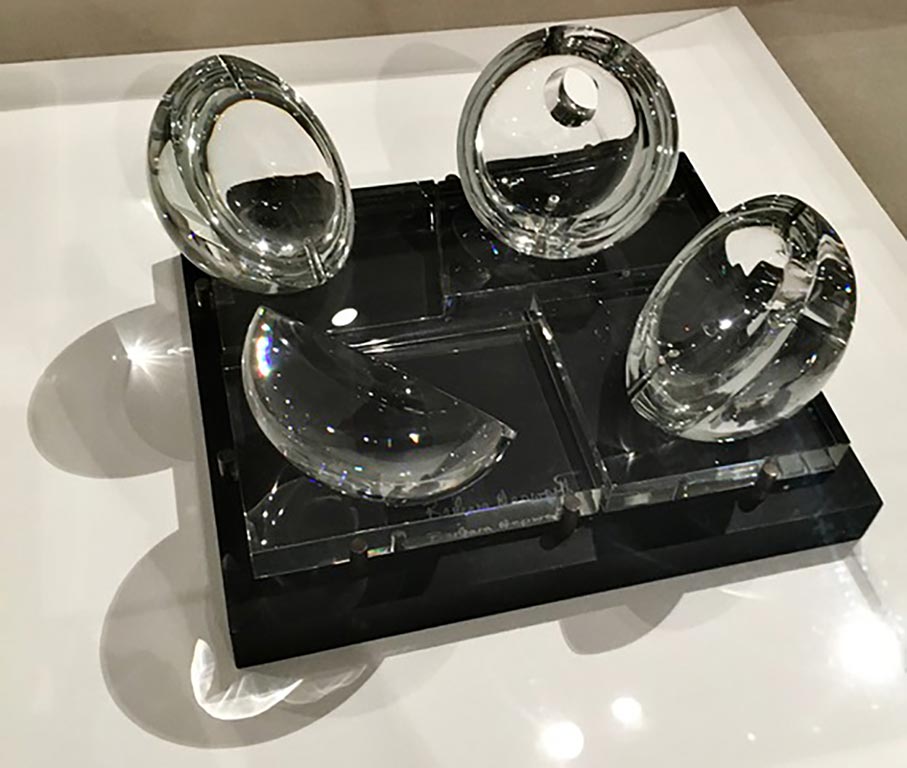
Toni Carver
THERE is a song by a Cornish band of the 1990s of considerable excellence – The Porters – called How Far We Have To Go To Return. Lyrically the song does just that. Some of the lyrics themselves are ‘returns’, slightly modified, from great and famous English poets, while the ‘return’ of the song comes back ‘many times brighter’.
As the song pursues this theme on several fronts so the same could be said of St Ives Tate’s new exhibition: Barbara Hepworth: Art & Life. It is a truly magnificent show in the new gallery, and it is nothing if not comprehensive. Much of the sculptor’s work here is returning to the town of its creation. So too does her extraordinary spirit and, I venture to suggest, many times brighter, simply because it comes in such splendid bounty.
The show itself has been travelling; first at Wakefield, Yorkshire then on to The Scottish Gallery of Modern Art in Edinburgh. Tate St Ives, with the Hepworth Museum, collaborated in producing the exhibition but has added it here, so as to focus more on the artist’s life in St Ives, both her home and ‘spiritual home’ post 1939 after she moved here with her second husband, Ben Nicholson and their triplets.
INFLUENTIAL

Globe Theatre London
Barbara Hepworth, who died in 1975 in a fire at her home in St Ives, was born in Wakefield, Yorkshire, later settling here in St Ives. She lived and worked here for the rest of her life. Her former home, Trewyn Studio, is now the Barbara Hepworth Museum and Sculpture Garden. She became one of the most influential British artists of the 20th century and was at the forefront of international modern art. She became a Christian Scientist, was deeply spiritual, and both interested and engaged with political and technological change.
During her life, her contributions were recognised nationally when she was awarded a CBE then later made DBE and locally as a Freeman of the Borough of St Ives.
The exhibition presents almost five decades of her sculptures, paintings, drawings, prints and designs. It celebrates her extraordinary life and achievements. She was an excellent draughtswoman and worked in both abstraction and figuration, much of her art expresses our relationships with each other and our surroundings, and how art can reflect and alter our perceptions of the world.
Versatile in the use of all her chosen media she could work on any scale, from a small drawing and a hand-held sculpture to the truly monumental, such as Single Form for the United Nations headquarters in New York, the armature for which was made at her second studio at the Palais de Danse in St Ives. It was a measure of Hepworth’s international stature that Jacob Blaustein, former U.S. delegate to the United Nations, commissioned her to make the sculpture as a memorial to the late UN Secretary-General Dag Hammarskjold after his death in an air crash in Africa in 1961.
Hepworth began to explore the neolithic monuments, and the landscape of West Penwith in the early 1950s comprehensively working within the St Ives idiom of landscape abstraction. The man-made holes that feature in the megaliths returned, many times brighter, in Hepworth’s sculptures, as did the forms from the cliffs and the natural weathered druidic basins on the cairns.
SATELLITE DISHES
This aspect of inspiration from the landscape is emphasised in the St Ives exhibition where local connections are evident in the titles of many works, such as Curved Form (Trevalgan)1956 and Sea Form (Porthmeor) 1958.
However, man made forms also influenced her as did space exploration where the satellite dishes on Goonhilly Downs had an impact, the Tate suggests, on works such as Disc with Strings (Moon) 1969.
This is a show that offers a mass of information, many and varied stories and tremendous visual impact in Tate’s new gallery where the space has been used remarkably well. Dividing walls have been used more intelligently than has often been the case giving the impression of several smaller galleries each scaled appropriately to the work on display. Interestingly, Barbara Hepworth is probably one of the few sculptors or artists whose work would not be overwhelmed if the gallery had been left as open space. Even so I feel this exhibition is much better displayed as it is.
CHALLENGING SPACES
I recall a discussion one Steering Committee meeting when we were considering the design of Tate St Ives before it was built: the various sizes of the galleries, the seeming convoluted trail around them, the odd little hole in the wall et al. An Evans & Shalev design that reflected the shapes and spaces of both Down’long St Ives and St Ives Modernism.
Patrick Heron was asked: ‘Aren’t these very awkward spaces for galleries, Patrick?’. After the usual pause to measure his reply he said: “Everybody knows that the best space to exhibit paintings is a warehouse with white walls. These spaces will present challenges for curators. And, that’s a good thing!”
I knew what he meant and back then the high vault and vast warehouse space of the new gallery was never in the game plan. From its earliest days Tate St Ives curators have generally risen to the challenges of the smaller galleries pretty well. The challenge of the new gallery where the space can easily over-whelm the work has, on occasion, not been so easily met.
Tate St Ives Director Anne Barlow and her Assistant Curator Giles Jackson can congratulate themselves, the gallery to work ratio is spot on. In all its aspects Barbara Hepworth: Art & Life is pure St Ives.
Reprinted with permission from the St Ives Times & Echo 3/12/2022

